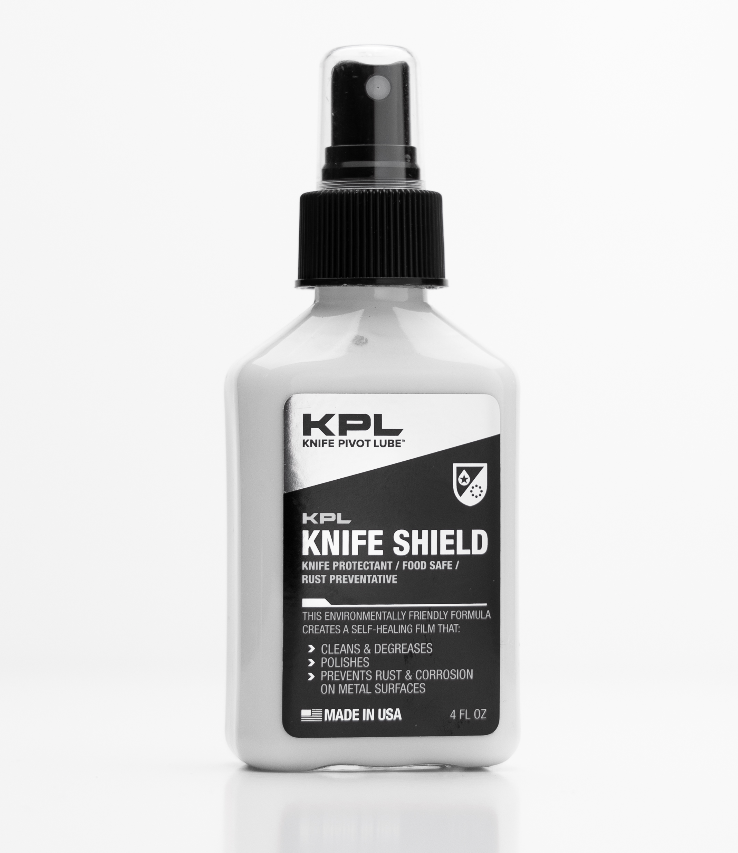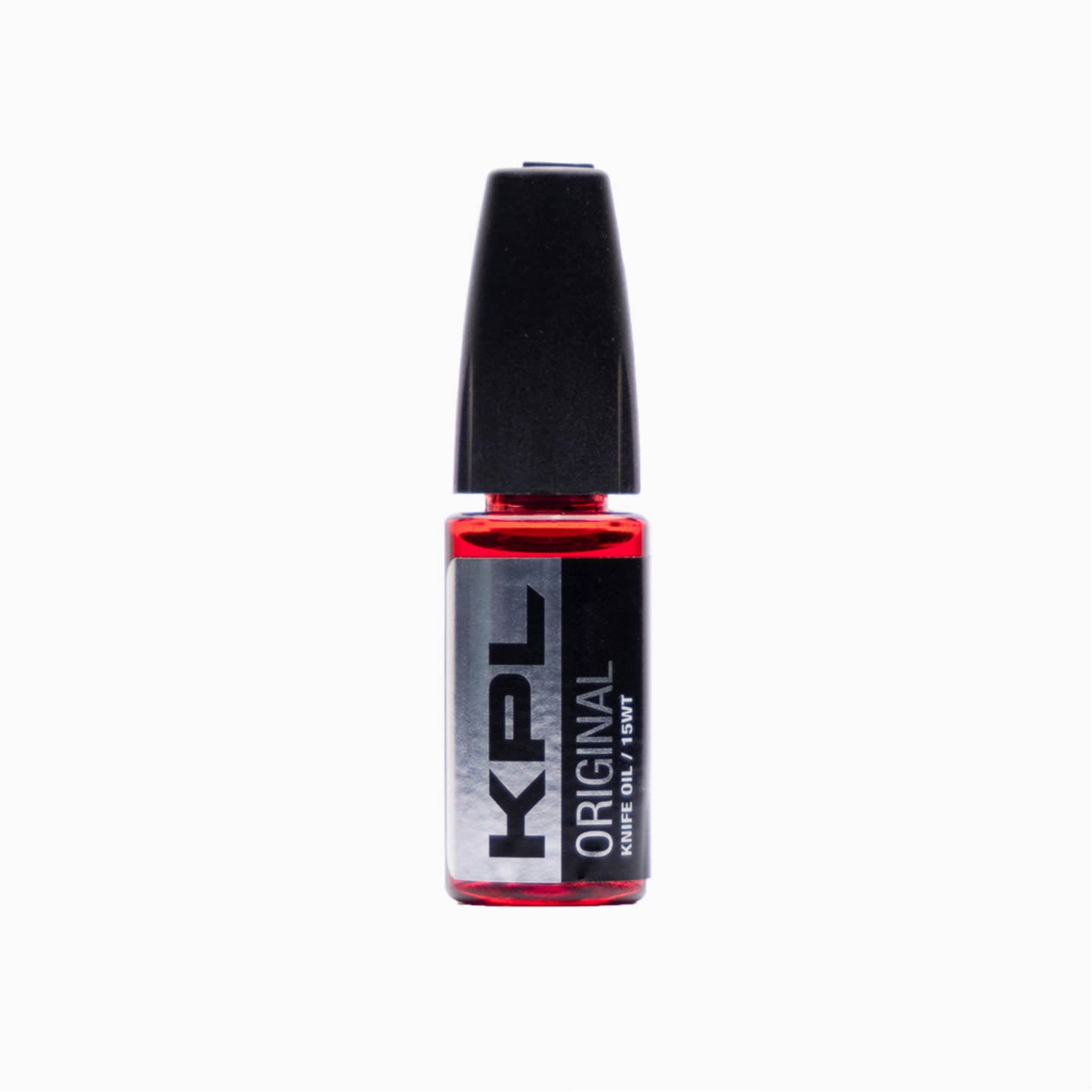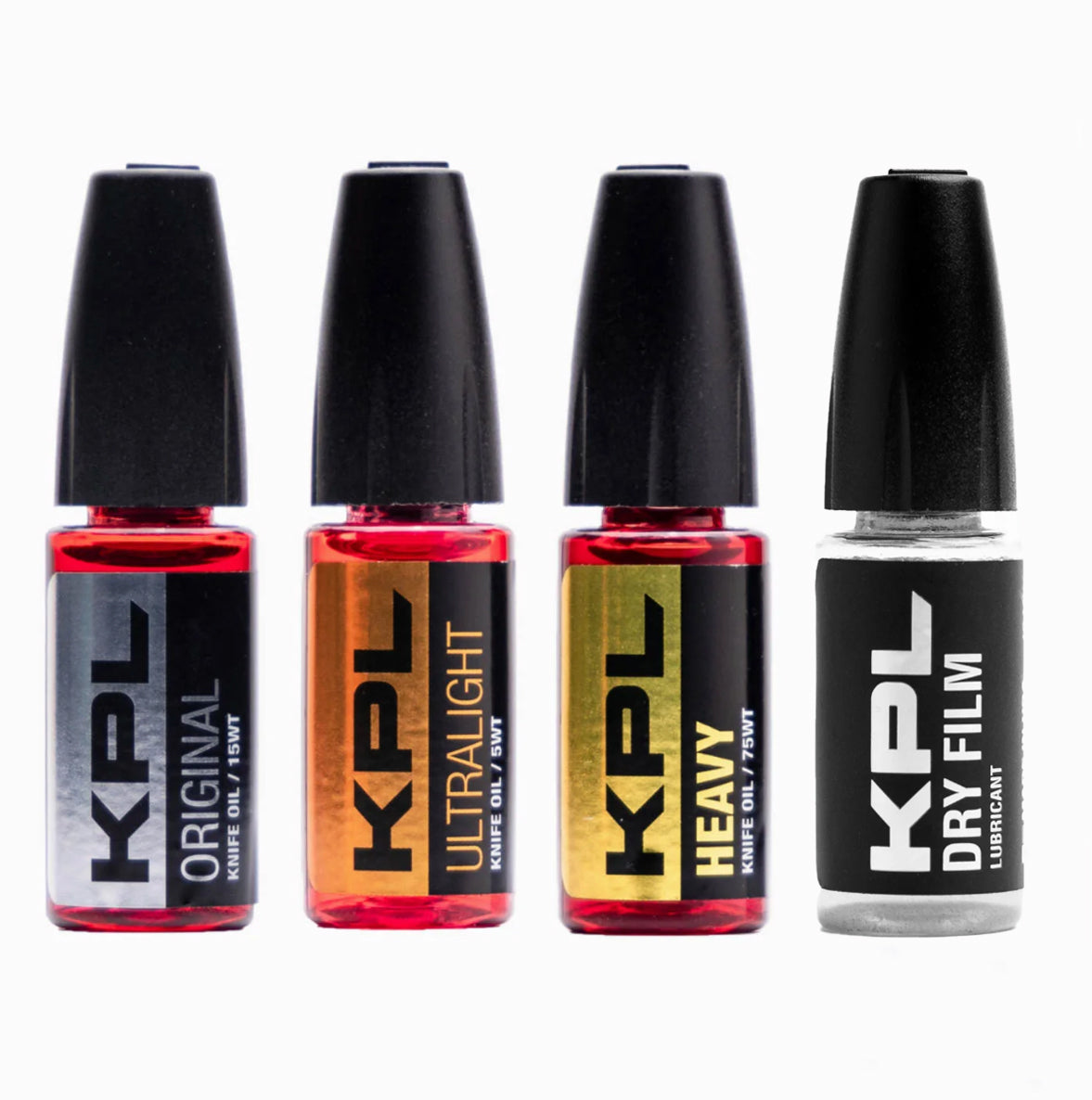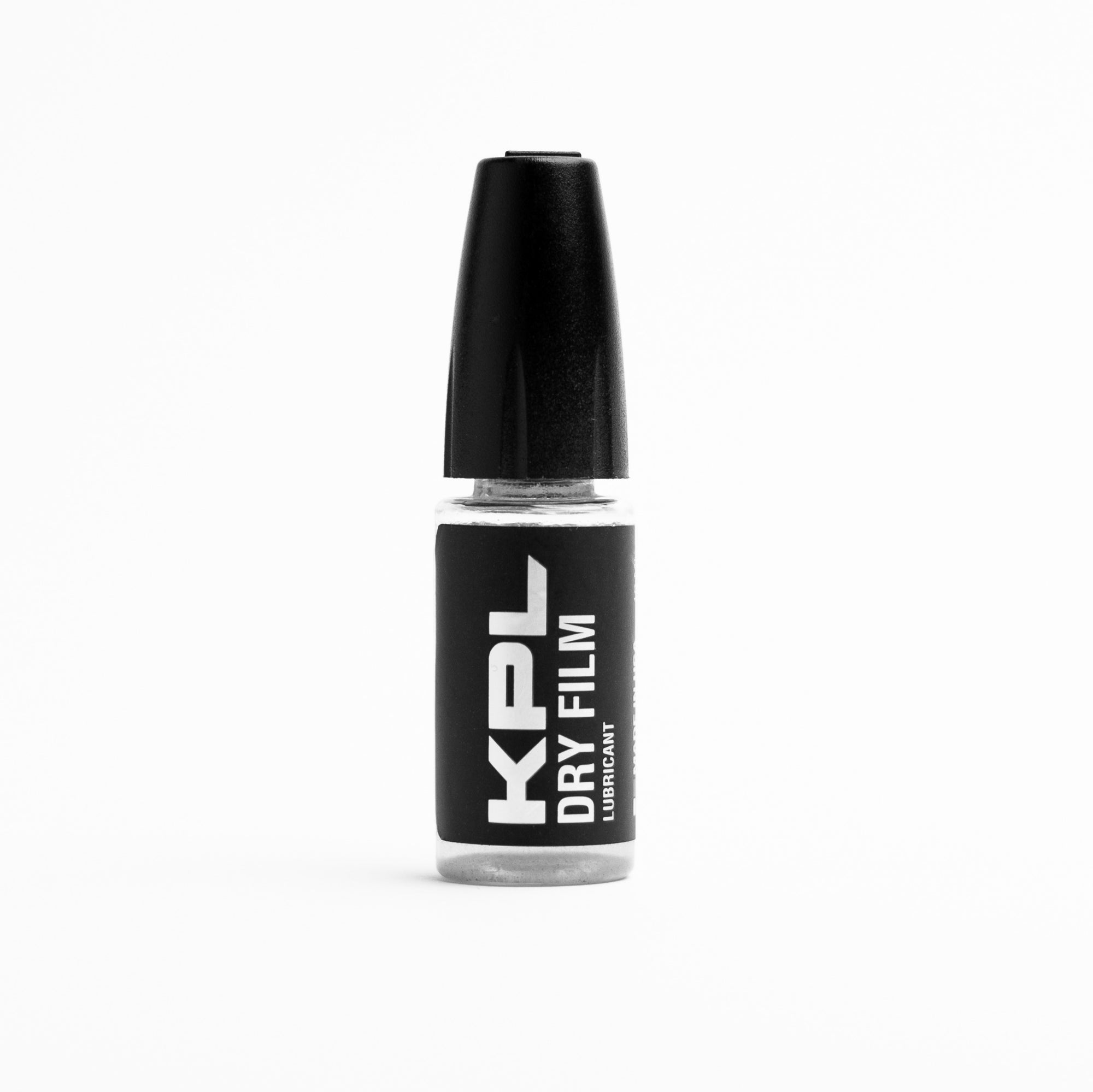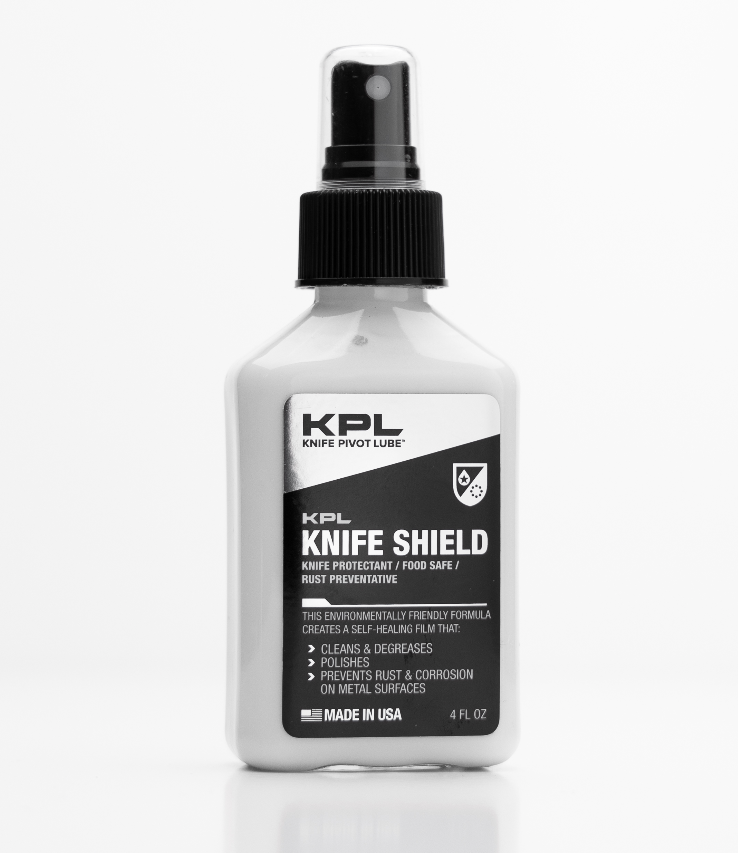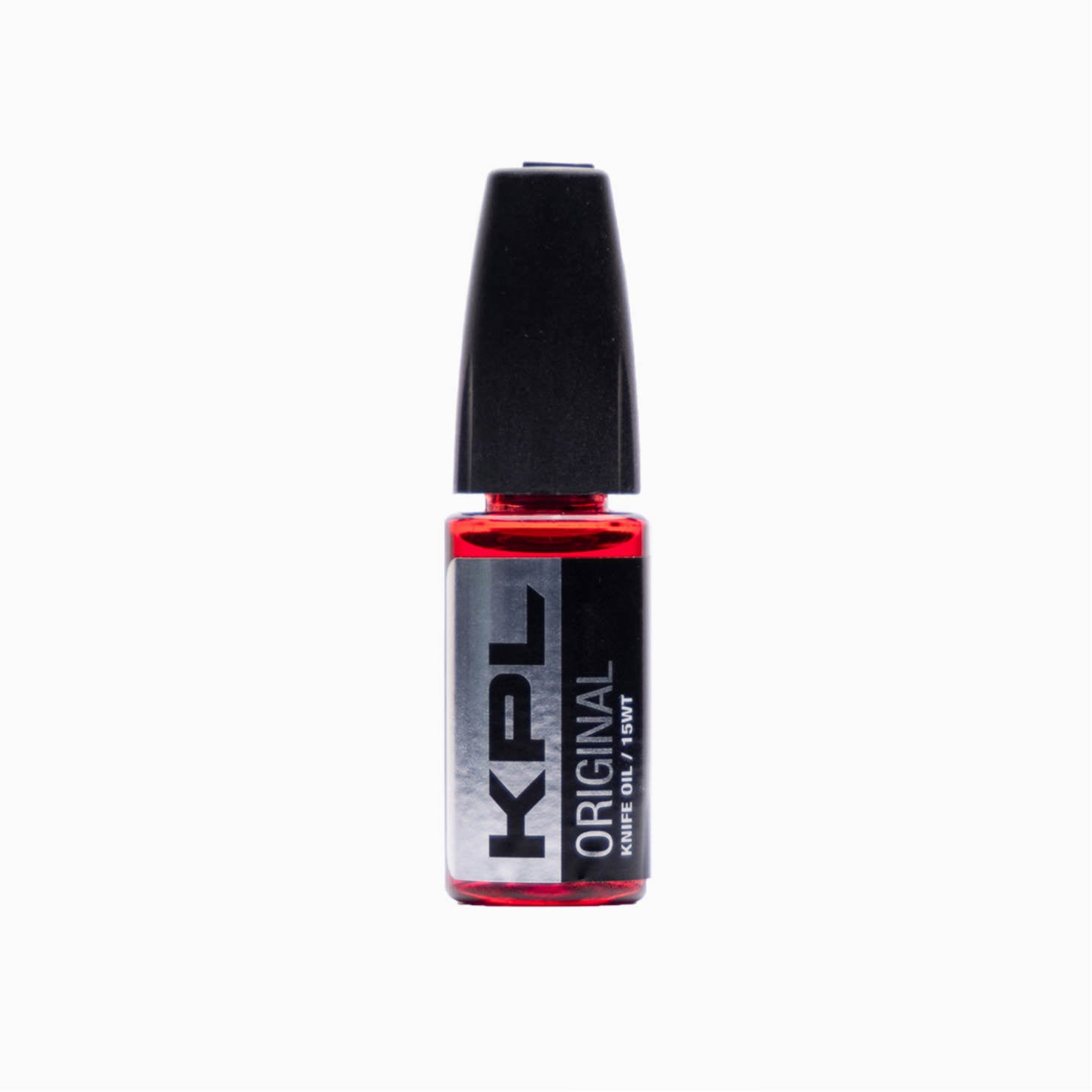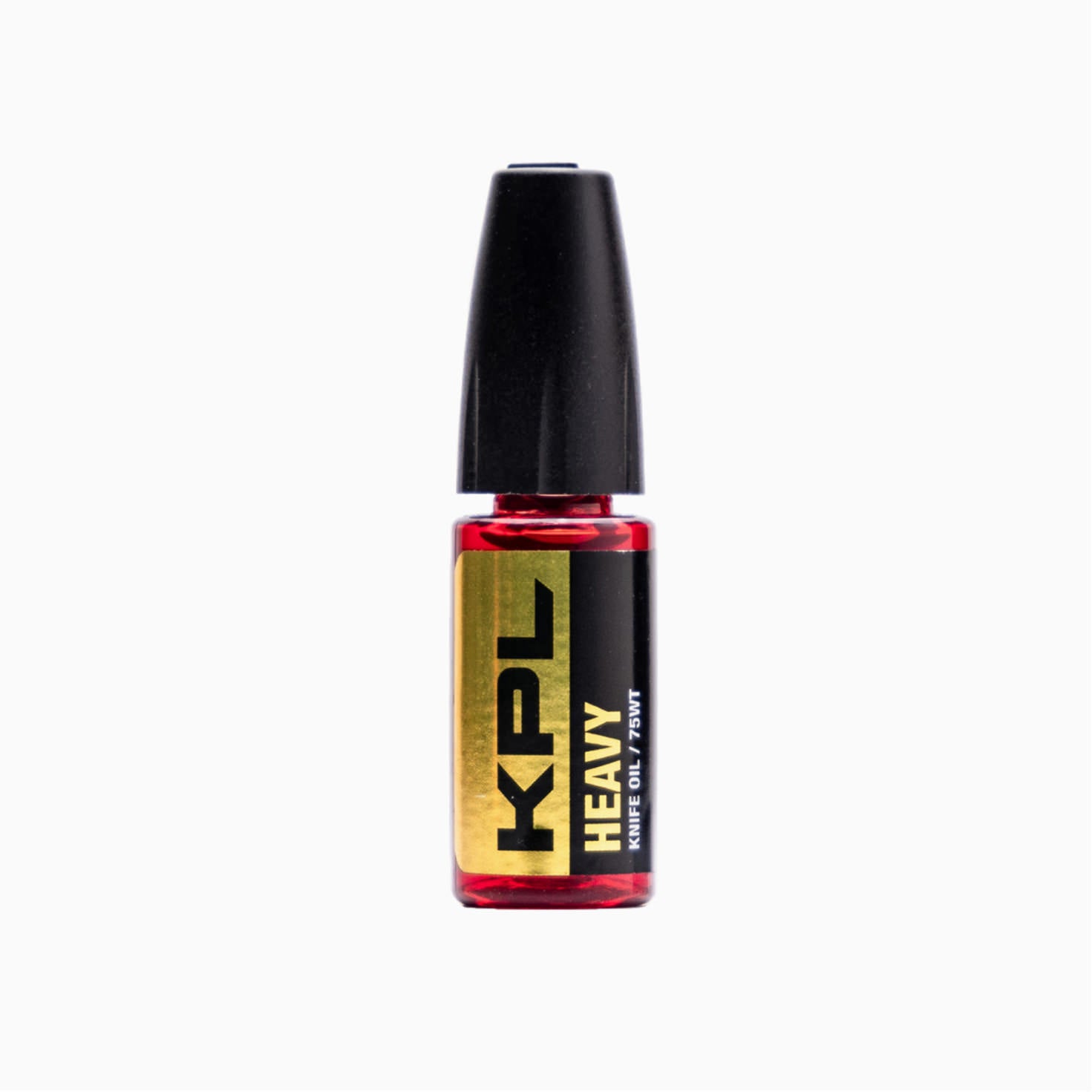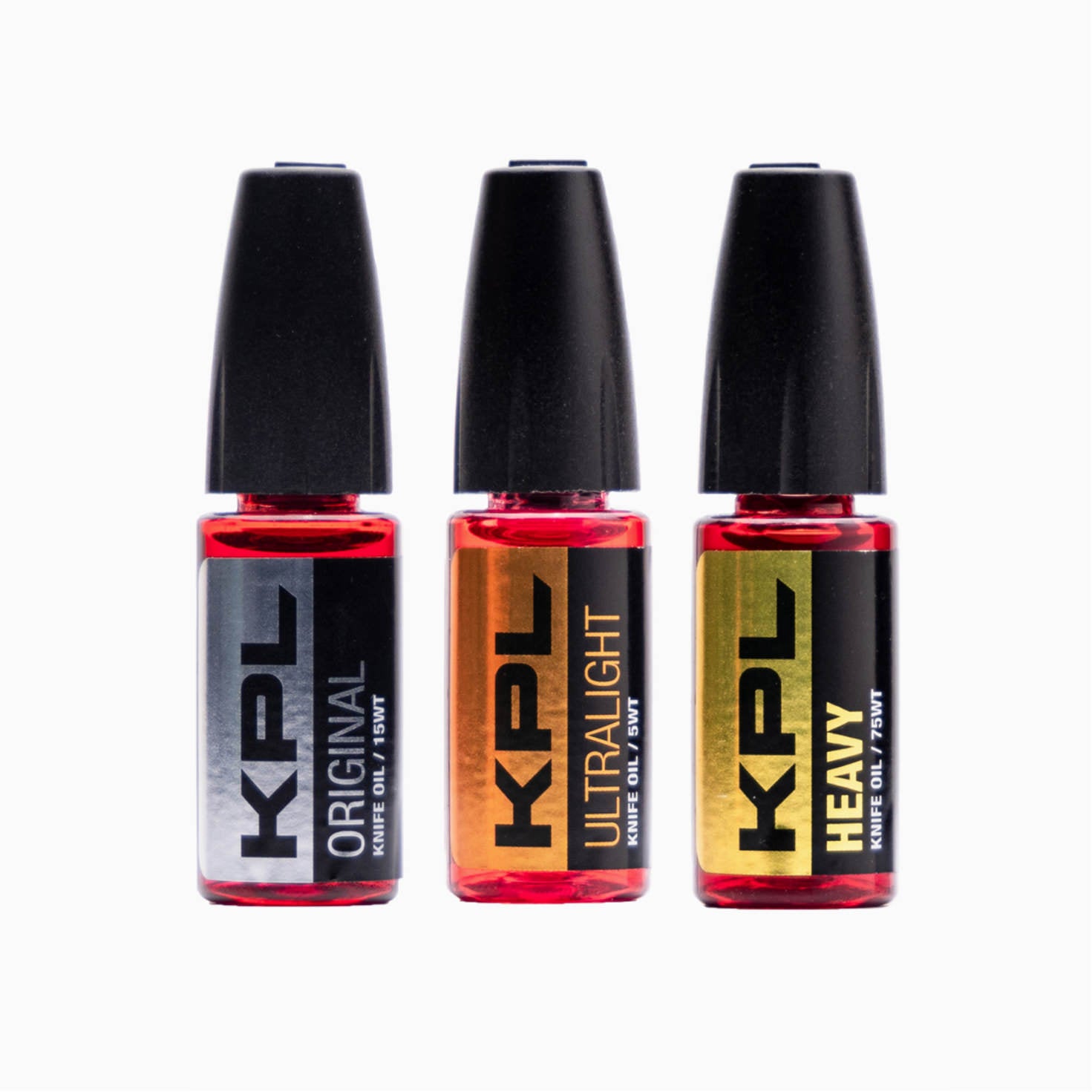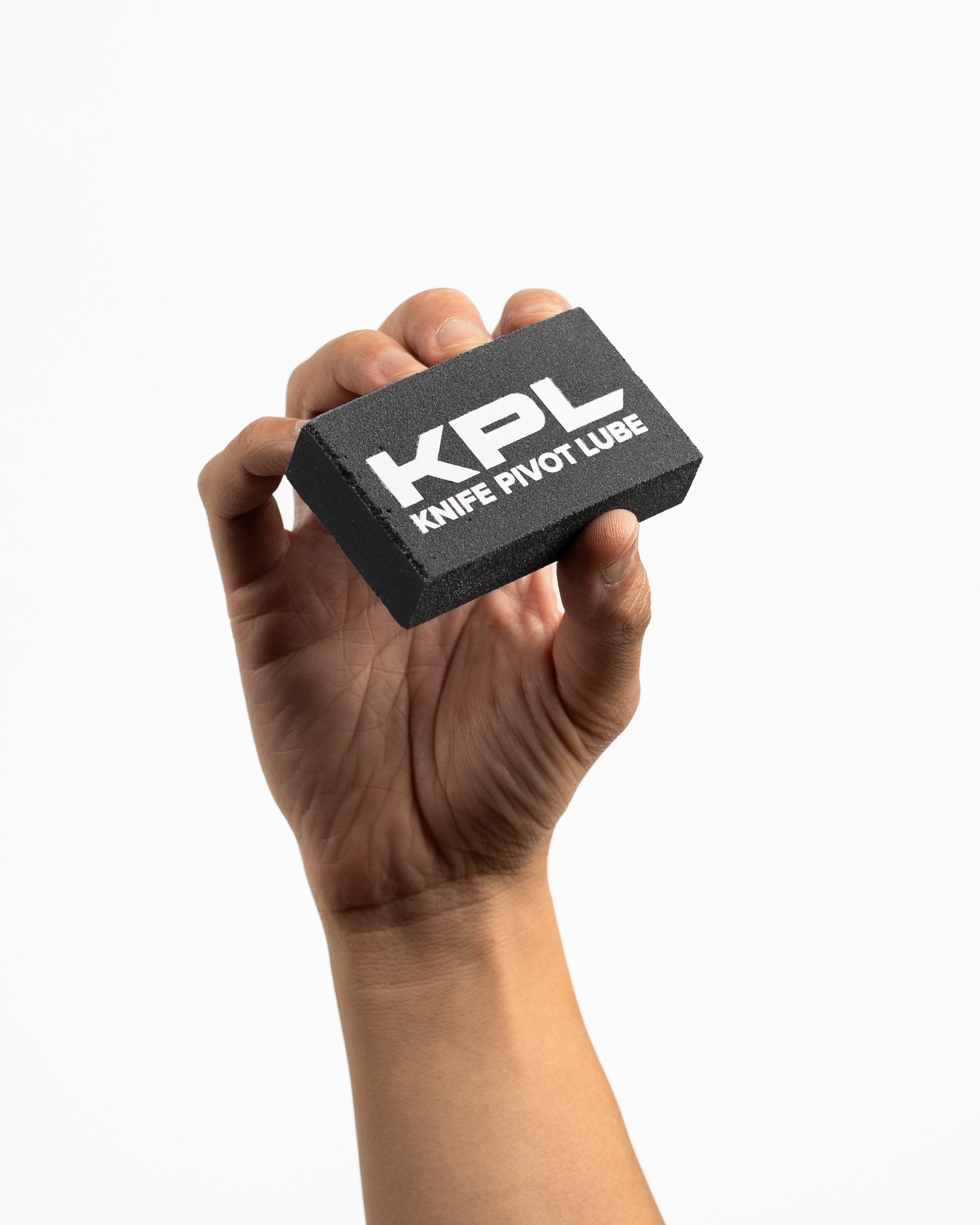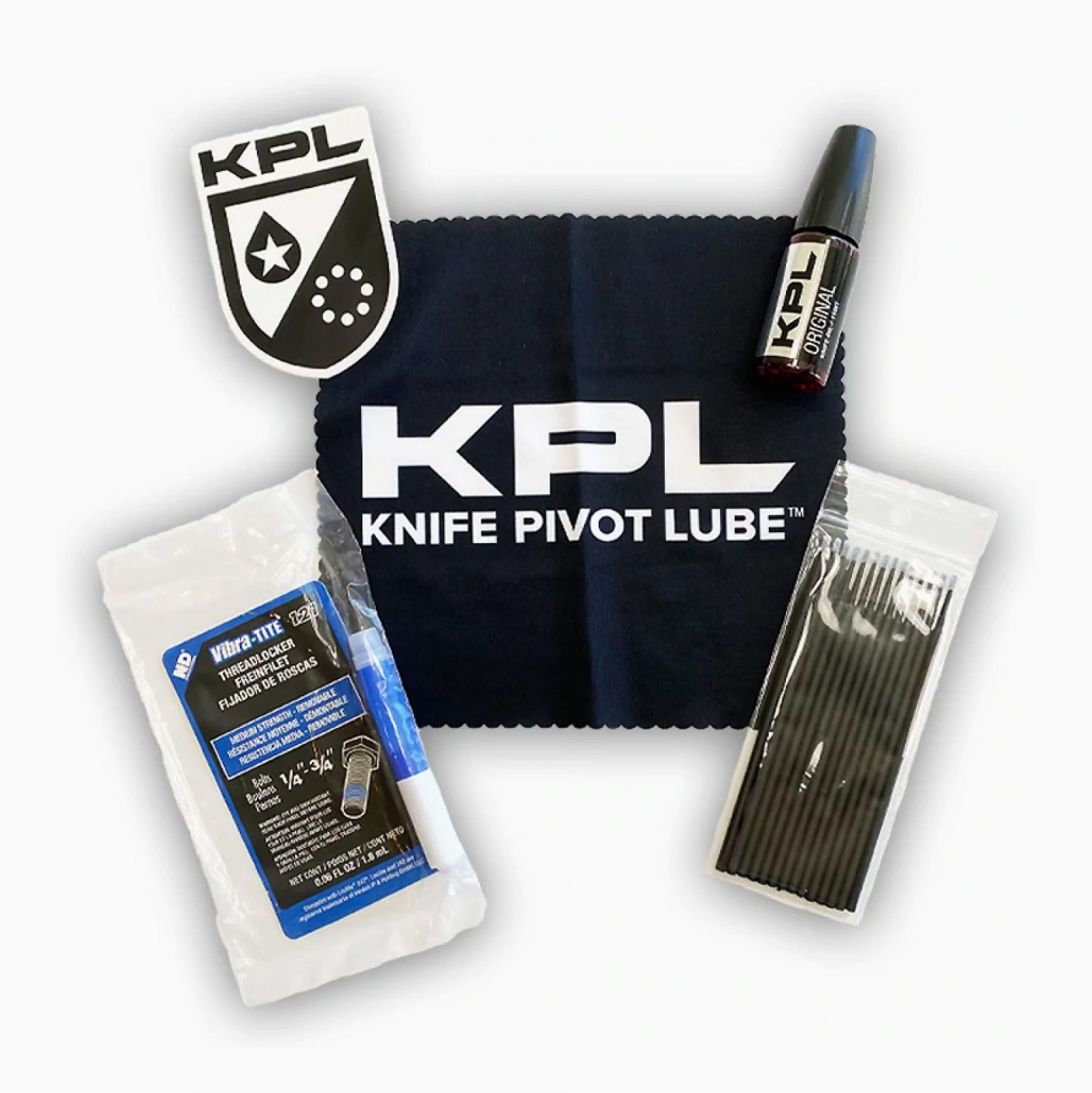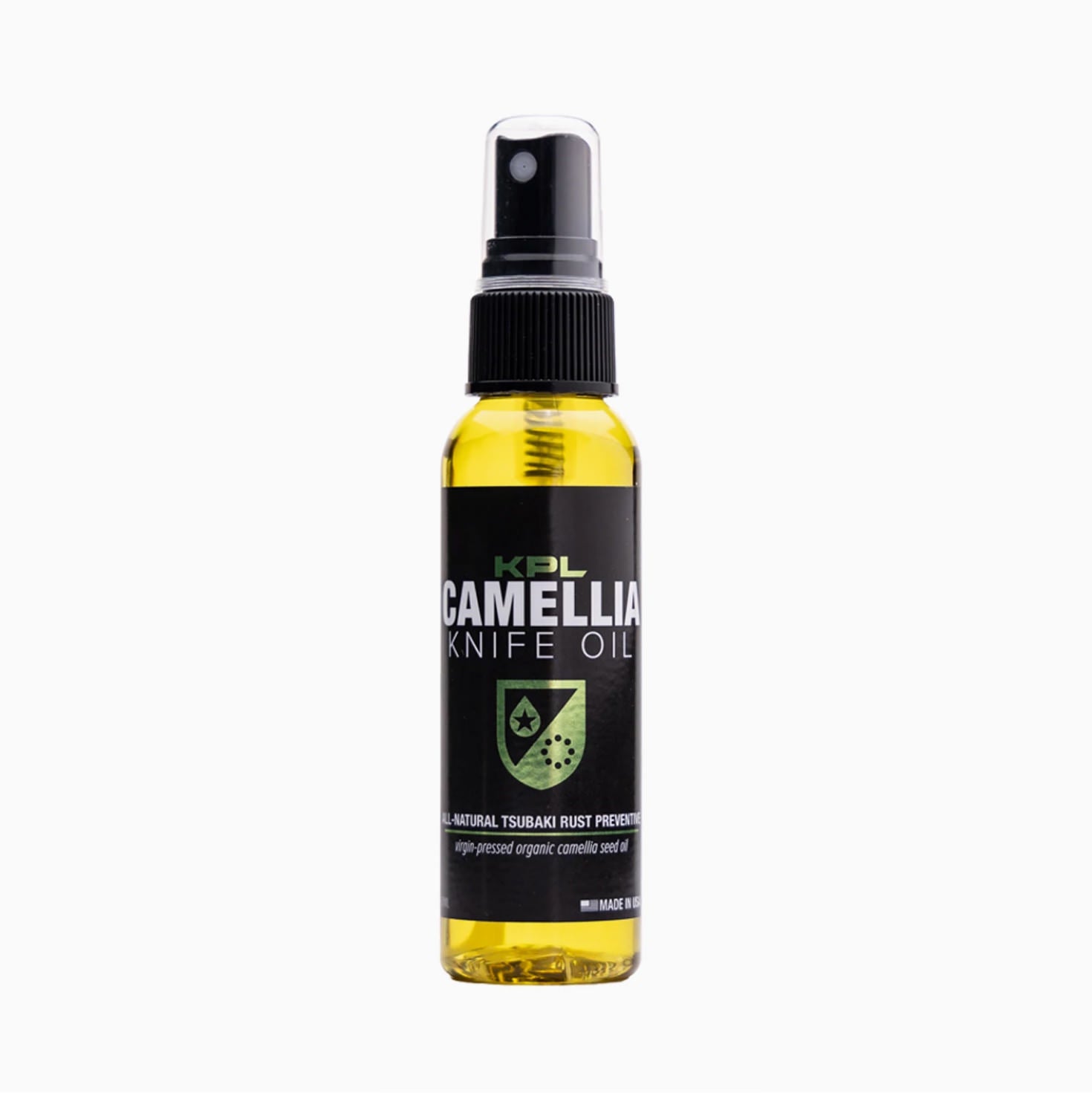Are you a knife collector looking to get your hands on your first balisong, but can’t figure out what these flippers are saying? What is tap? What is play? What's the difference between bushings and bearings?
Maybe you've just purchased your first butterfly knife and are trying to hop into the community, but aren’t sure what others mean when they’re talking about “tolerances” or what a balisong “runs on.”
If you find yourself wondering what these terms mean then read on and wonder no more, this article will clear some things up for you! If the word you're looking for isn't defined here, check out our Balisong Glossary for even more balisong-related terms.
A Brief History of Balisong Name Origins
What is the meaning of “Balisong?”
It is believed that the word “balisong” originates from the town Taal in the province of Batangas, Philippines, although no one is entirely sure what “balisong” really means.
One of the more popular theories on the origin of the word is that it comes from the Tagalog words “bali” and “sun”. “Bali” means “to break” and “sun” means “horn,” which would make the meaning of the word “broken horn”.
If this is truly the etymology of the word, it is likely a reference to the use of animal horn and bone used in making the handles of traditional Filipino balisongs (also known as "FHMs", an acronym for "Filipino Hand Made").

What is a Butterfly Knife?
"Butterfly knife" is just another term for balisong, and is commonly used interchangeably. Some believe the term “butterfly knife” comes from the knife resembling fluttering butterfly wings when being manipulated or flipped.
"Balisong" is the preferred term for most people involved in the online communities, whereas "butterfly knife" is much more commonly used amongst the general public, who likely have never even heard the word "balisong" before.
Veintinueve
While not as common as the terms "butterfly knife" and "balisong", "veintinueve" is another term synonymous with "balisong".
"Veintinueve” is Spanish for “29”, and could either be a reference to the length of the knife (often 29 cm long in the open position) or to the legend of an ancient Filipino ruler who is said to have killed 29 men with his balisong in battle. This is why you will commonly see the number 29 in conjunction with the word balisong or butterfly knife.
What are Tolerances?
Tap, Play, and Blade Rub
One of the most common things you’ll see people talking about in the balisong community is how tight a knife's tolerances are. You'll likely see this in conjunction with references to the “tap” and “play” of a particular knife.
Tolerances relate to how much wiggle room the handles have when the knife is fully assembled. If there is very little wiggle room, you would say it has almost no “play.” You can easily demonstrate balisong play by showing the ends of the handles and pushing them in opposite directions.

Most people prefer little to no play in their handles for precise and predictable flipping. When a balisong has a good amount of play, it is likely to have “tap” as well.
Tap is when the butterfly knife blade hits the inside of the handle. It can easily be demonstrated by holding one handle of the balisong in the closed position and shaking it.
Tap can cause “blade rub”, where the blade gets marks from where it has made contact with the inside of the handle.
What Does a Balisong “Run On?”
Pivot Systems
One of the most common questions people will ask about a balisong is what it "runs on". This is simply a reference to the pivot system of a butterfly knife.
There are three common pivot systems used in modern balisongs: washers, bushings, and bearings.

A washer pivot system is comprised of two washers that sandwich the blade between them. Although this system is typically the hardest to tune, is most likely to have tap, and often has more play than bushings and bearings, it still provides smooth flipping action and is less costly than the other two pivot systems, making this a great option for more budget-friendly balisongs.
A bushing pivot system consists of two small steel bushings that go in the pivot area in the tang of the blade. The bushing should be just a hair thicker than the blade itself, and is then sandwiched between two washers.
Bushings are preferred by the majority of balisong flippers due to their tight tolerances and predictable handle swing. For more information on bushings go and check out All You Need to Know About Balisong Bushings.
Bearing pivots are constructed of a ring of small ball bearings that sits in a grove in the blade. You may also occasionally see washers that lie on top of the bearings, depending on the handle material of the knife.
It is generally easier for makers and flippers to obtain tight tolerances with a bearing system, but many flippers still prefer bushings, even if it comes with a higher price tag. This is largely due to the faster handle swing associated with knives that run on bearings, making them flip somewhat more "unpredictably" and with more "bounce" than some flippers are used to.
For further reading on this topic head on over to our previous article, All you Need to Know About Balisong Pivot Systems.
Balance
The balance of a butterfly knife relates to how it feels in the hand when flipping. The balance point is where you can balance the knife with one finger while the knife is in an open position.
A “neutral” balisong has the weight evenly distributed between the blade and handles, and is all around good for any type of trick. A “handle heavy” or “handle bias” butterfly knife has more weight in the handles, and a “blade heavy” or “blade bias” knife has more weight in the blade.
Depending on your flipping style, different weight biases could make different tricks feel easier or more difficult for you. There are many weight distribution factors that affect the balance of a balisong and how it feels, but this is what flippers mean when referring to "balance" in the most broad sense of the word.

Construction
The construction of a balisong is a very popular topic in the balisong community. Construction primarily refers to the style of handles of a butterfly knife, but can also refer to the pivots and pin system.
Pins
Tang and Zen Pins, Kickers, Handle Gap, and Slap
Pins are responsible for keeping the knife locked in both the open and closed positions, and determine how much "handle gap" a knife has (which is simply the amount of space between the handles when fully open or closed). Without pins, the handles would have nothing to prevent them from colliding with each other, which is known as "handle slap".
The main three categories of pin construction are tang pin, zen pin, and pinless.
The vast majority of tang pins are press-fit into the blade tang itself, but some makers have experimented with tang pins that screw on and off.
Most tang pin balisongs contain 2 tang pins, one for the open position and one for closed. Others, such as the Cold Steel Arc Angel, have a single tang pin for keeping the knife locked open, but contain "kickers" to handle keeping the handles from slapping in the closed position.
It is technically possible for a balisong to have more than two tang pins, though this is extremely rare.
Zen pin knives have pins inside the handles and a notch in the blade tang known as the zen nipple. Zen pins can be press fit, screwed in, or a knife can have "hidden zen pins", which means that they are integrated into the handles in such a way as to not be visible when looking at the handle scales.
Zen pins are neither better nor worse than tang pins, provided that they're both constructed well. It all comes down to personal preference!

The final type of pin construction is to have no pins at all. Pinless balisongs are typically found in high-end knives, the most well-known including those coming from Fiore Knives, as well as the Monarch from JK Design and Hansen metals.
Although many see this as a cleaner and more elegant design, pinless balisongs often develop handle slap after extensive flipping. Both the Monarch as well as the knives from Fiore are made with titanium handles, which is a softer metal than steel.
Repeated impacts where the blade meets the handles thus slowly deforms the softer titanium over time, eventually decreasing the handle gap until the handles slap together. Makers of pinless balisongs are actively working on ways to mitigate this issue, including slight alterations to the tang shape and increasing the handle gap.
Handles: Sandwich, Channel, and Chanwich
There are three main types of handle construction used for balisongs: sandwich, channel, and chanwich.

Sandwich handles are made up of two separate slabs or liners with spacers in between. This is considered the easiest type of balisong construction for manufacturers to make, but requires more hardware to keep the handles together than channel construction.
Channel handles are made of one single piece of material that is typically either cast or milled. These are harder to produce due in part to the increased amount of time it takes to machine them. Channel knives require less hardware to hold together and feel very solid in the hand.
Some channel handles are referred to "speed channels", which are simply channel handles with extra slots milled out of the sides. Speed channels make the knife lighter, affecting the balance and the way the knife flips, while also changing the sound and ring of the knife.
Chanwich balisongs use a combination of both channel and sandwich constructions. The handles can either be slabs with a channel spacer that holds them together, or two pieces of metal that fit together to form a channel. Chanwich knives have the look and feel of a channel knife while also being able to utilize the advantages of sandwich construction.
For more information on butterfly knife construction check out our article on the Types of Balisong Construction!
Spacers
Barrels, Full-Length, and Faux-Channel
Spacers are the part of the balisong that makes the gap between the liners or scales. It’s usually held in place by one or two sexbolts through the handles, but sometimes can be held in by pins or threaded screws.

The spacers that come with a new stock balisong are often simply called stock spacers, regardless of what category they might fall under. Barrel, full-length, and faux-channel spacers sometimes come stock on certain balisongs, but can also be purchased from different balisong makers and modders.
Barrel spacers are exactly as the name implies: it's simply a circular barrel that fits a sexbolt through the center to hold it in place.
Full-length spacers extend all the way down to the end of the handles. The stock spacers in some knives, such as the BRS Replicant, don't extend to the ends of the handles in order to save room for a latch.
Full-length spacers are a great option for flippers who prefer latchless balisongs and want a spacer to fill out the bottom of the handles and give the knife a more solid feel.
BONUS JARGON: The most common latch configuration you'll see is with the latch attached to the bite handle, which is known as a "Batangas latch". Latches attached to the safe handle are referred to as a "Manila latch".
Faux-channel spacers are spacers that extend from the bottom of the handle up to as close to the pivot area as they can. This emulates the look and feel of a channel construction knife.
Other Common Terms
Ring of shame, Safe Handle, Bite Handle
A “ring of shame” is a cut that goes all the way around a single finger. It often happens when someone forgets which handle they're holding and then tries to do a chaplin.
In a normal chaplin you spin the balisong around your finger with your finger between the spine of the blade and the "safe handle". The safe handle is the one adjacent to the spine of the blade, making it safe for the blade to contact your hand. The handle adjacent to the sharpened edge is called the "bite handle", or more rarely the "opposite handle".
If a chaplin is not done correctly, the blade rotates around the finger - rather than the unsharpened spine.
Despite the name, it is a common type of cut in the flipping community and is nothing to actually be ashamed of. Just make sure that if this happens to you you know the best ways of Treating Balisong Knife Injuries!
CCC
“CCC” is a common term used to describe a very cheap balisong, most often bought from amazon or aliexpress. It is a widely used acronym, but the words that the letters stand for are not standardized.
The connotation, however, is always the same. CCC always stands for some combination of words like "cheap", "crap", "crappy", "clone", "copy", and "Chinese", since most cccs are mass produced by manufacturers in China. You might therefore hear "cheap Chinese crap", "crappy Chinese clone", "cheap crappy copy", so on and so forth.
Significantly, "ccc" does not refer to all butterfly knives made in China. Maxace, for example, is a Chinese company that produces balisongs of much higher quality than a typical mass-produced ccc.
CCCs are made from low quality materials, usually have non-adjustable pinned pivots, and often copy designs from other balisong makers.
Despite the extremely negative connotations that come with cccs and their reputation for falling apart after extended use, it's how many flippers first get into the hobby and therefore inhabit a strange place in flippers' hearts somewhere between hatred and nostalgia.

Grail
Do you ever look at a knife and think about how awesome it’d be to own one of those someday? Chances are that knife is something called a “grail” or "queen".
A grail knife is the knife you always look at and hope to get eventually. Different people can have different grails, and they don't always have to be extremely high-end expensive knives.
For someone just starting in the hobby, they may look at something like a BRS Alpha Beast or Replicant as their grail knife. For others it might be something much more extravagant, like a Ryworx Konohishi or a custom made knife.
My personal grail is a Gigas by WB.Concept. Everyone’s grail knives are different and susceptible to change after you start chasing and purchasing more knives.

Conclusion
Hopefully this article helped you learn some of the commonly used terms within the world of flipping! Balisong jargon can be a lot to take in for people new to the hobby, but the more you flip the more these words will become a part of your vernacular! If you've got any questions send me a DM on instagram @poip._.sus


